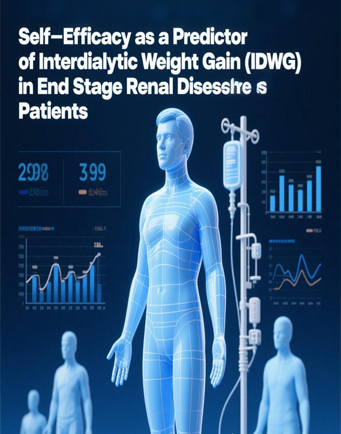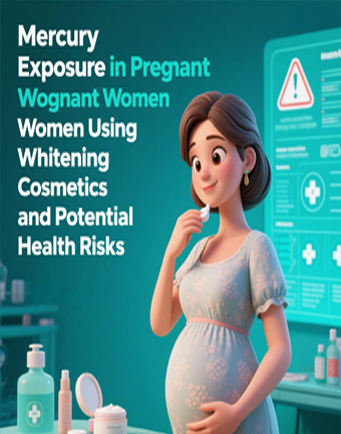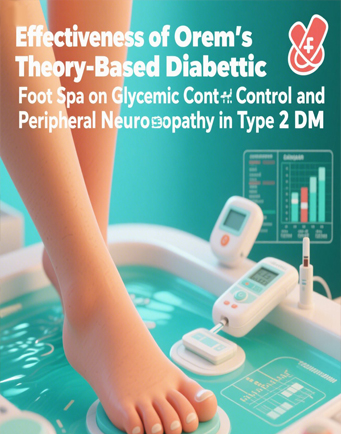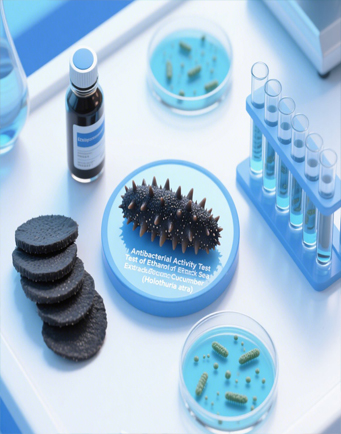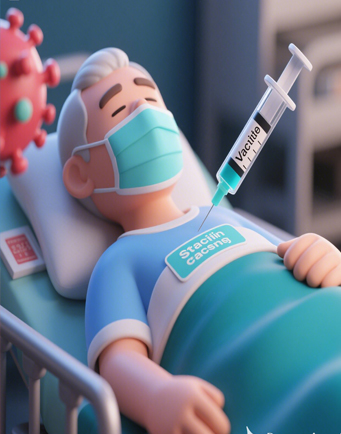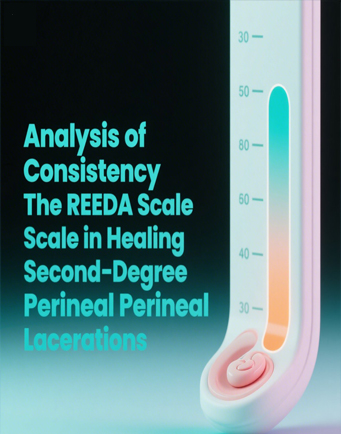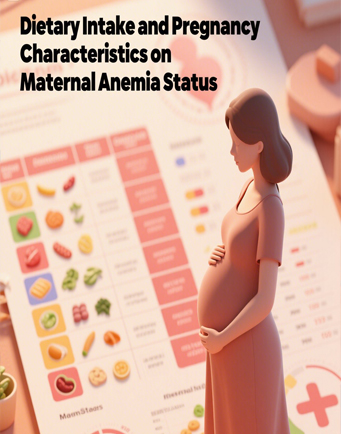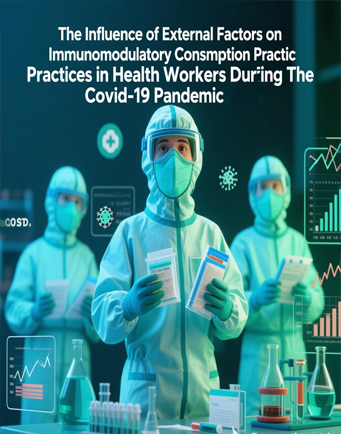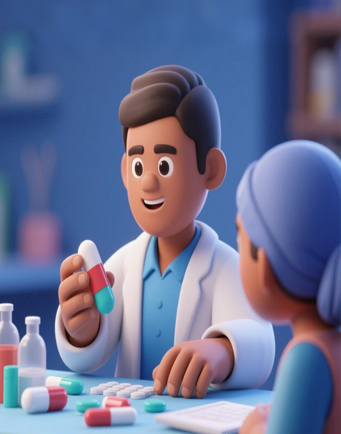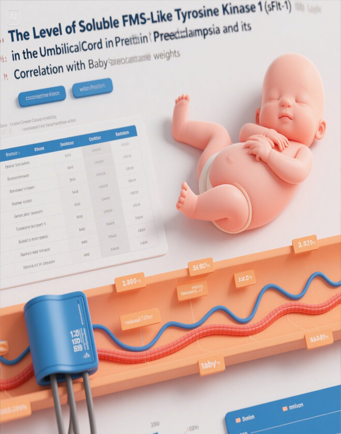The Effect of Sub-Acute Inhalation Exposure to Polyethylene Micro-Nano Plastics on the Histopathological Features of the Mammary Glands in Female Wistar White Rats (Rattus Norvegicus)
Downloads
Most household appliances are made of plastic derived from synthetic petroleum and result from polymerization processes. One type of plastic is Polyethylene (PE). Polyethylene (PE) contains antimony trioxide compounds that are carcinogenic if ingested in excessive amounts, triggering cancer and oxidative stress. This effect can be assessed by measuring malondialdehyde (MDA) levels in the body. This study aims to determine the proliferation of abnormal cells in the lactiferous ducts and mammary gland acini, as well as the increase in MDA levels. The research method used is a true experimental design with a Randomized Post Test Only Group Design. This study used the mammary organs and blood of female white rats exposed to PE for 28 days. The number of samples used in this study was 12 female white rats. The results showed significant differences in the mammary glands' histopathological features and MDA levels. Based on the Independent T-Test results on the number of cell layers in the lactiferous ducts, acini, and the number of acini (p<0.05) and the Mann-Whitney test on MDA levels (p<0.05). Significant changes in the histopathological features and MDA levels were observed in the mammary glands exposed to polyethylene (PE) plastic. Exposure to micro-nano plastics of PE type at a dose of 15 mg/m3 for 28 days differed significantly in the MDA levels of mammary glands, histopathological picture of mammary glands at cell proliferation events, both in the lactiferous ducts and acini cells. In addition, exposure to PE plastic has the potential to cause health problems in the breast organs if exposed for a long time and in excess doses.
Anom, I. D. K., & Lombok, J. Z. (2020). Karakterisasi Asap Cair Hasil Pirolisis Sampah Kantong Plastik sebagai Bahan Bakar Bensin. Fullerene Journal of Chemistry, 5(2), 96-101. https://doi.org/10.37033/fjc.v5i2.206
Baharuddin, A., Asran, A., & Ikhtiar, M. (2023). Spasial Analisis Mikroplastik dengan Metode FT-IR (Fourier Transform Infrared) Pada Feses Petani Kerang Hijau. Window of Health: Jurnal Kesehatan, 331-343.
Campanale, C., Massarelli, C., Savino, I., Locaputo, V., & Uricchio, V. F. (2020). A detailed review study on potential effects of microplastics and additives of concern on human health. International journal of environmental research and public health, 17(4), 1212. https://doi.org/10.3390/ijerph17041212
Cary, C. M., Seymore, T. N., Singh, D., Vayas, K. N., Goedken, M. J., Adams, S., ... & Stapleton, P. A. (2023). Single inhalation exposure to polyamide micro and nanoplastic particles impairs vascular dilation without generating pulmonary inflammation in virgin female Sprague Dawley rats. Particle and Fibre Toxicology, 20(1), 16. https://doi.org/10.1186/s12989-023-00525-x
Chang, X., Xue, Y., Li, J., Zou, L., & Tang, M. (2020). Potential health impact of environmental micro‐and nanoplastics pollution. Journal of Applied Toxicology, 40(1), 4-15. https://doi.org/10.1002/jat.3915
Chen, K., Lu, P., Beeraka, N. M., Sukocheva, O. A., Madhunapantula, S. V., Liu, J., ... & Aliev, G. (2022, August). Mitochondrial mutations and mitoepigenetics: Focus on regulation of oxidative stress-induced responses in breast cancers. In Seminars in cancer biology, 83, 556–569. https://doi.org/10.1016/j.semcancer.2020.09.012
Dhaka, V., Singh, S., Anil, A. G., Sunil Kumar Naik, T. S., Garg, S., Samuel, J., ... & Singh, J. (2022). Occurrence, toxicity and remediation of polyethylene terephthalate plastics. A review. Environmental Chemistry Letters, 20, 1777–1800. https://doi.org/10.1007/s10311-021-01384-8
Diningsih, A., & Rangkuti, N. A. (2020). Penyuluhan Pemakaian Plastik Sebagai Kemasan Makanan dan Minuman yang Aman Digunakan untuk Kesehatan di Desa Labuhan Rasoki. Jurnal Education and Development, 8(1), 17-20. https://doi.org/10.37081/ed.v8i1.1489
Enyoh, C. E., Verla, A. W., Verla, E. N., Ibe, F. C., & Amaobi, C. E. (2019). Airborne microplastics: a review study on method for analysis, occurrence, movement and risks. Environmental monitoring and assessment, 191, 668. https://doi.org/10.1007/s10661-019-7842-0
Frommlet, F., & Heinze, G. (2021). Experimental replications in animal trials. Laboratory animals, 55(1), 65-75. https://doi.org/10.1177/0023677220907617
Ghatge, S., Yang, Y., Ahn, J. H., & Hur, H. G. (2020). Biodegradation of polyethylene: a brief review. Applied Biological Chemistry, 63, 27. https://doi.org/10.1186/s13765-020-00511-3
Helm, J. S., & Rudel, R. A. (2020). Adverse outcome pathways for ionizing radiation and breast cancer involve direct and indirect DNA damage, oxidative stress, inflammation, genomic instability, and interaction with hormonal regulation of the breast. Archives of toxicology, 94(5), 1511-1549. https://doi.org/10.1007/s00204-020-02752-z
Ijaz, M. U., Ayaz, F., Mustafa, S., Ashraf, A., Albeshr, M. F., Riaz, M. N., & Mahboob, S. (2022). Toxic effect of polyethylene microplastic on testicles and ameliorative effect of luteolin in adult rats: Environmental challenge. Journal of King Saud University-Science, 34(4), 102064. https://doi.org/10.1016/j.jksus.2022.102064
Ilmiawati, I., Mahata, L. E., Aliska, G., Rustam, E., Katar, Y., Rahmatini, R., ... & Usman, E. (2022). Peningkatan Pengetahuan Masyarakat tentang Bahaya Paparan Mikroplastik dan Dampaknya bagi Kesehatan. Warta Pengabdian Andalas, 29(3), 305-311. https://doi.org/10.25077/jwa.29.3.305-311.2022
Jelic, M. D., Mandic, A. D., Maricic, S. M., & Srdjenovic, B. U. (2021). Oxidative stress and its role in cancer. Journal of cancer research and therapeutics, 17(1), 22-28. https://doi.org/10.4103/jcrt.JCRT_862_16
Karlsson, T. M., Vethaak, A. D., Almroth, B. C., Ariese, F., van Velzen, M., Hassellöv, M., & Leslie, H. A. (2017). Screening for microplastics in sediment, water, marine invertebrates and fish: Method development and microplastic accumulation. Marine pollution bulletin, 122(1-2), 403-408. https://doi.org/10.1016/j.marpolbul.2017.06.081
Kementerian Lingkungan Hidup dan Kehutanan Republik Indonesia. (2022). Capaian Kinerja Pengelolaan Sampah. Jakarta: Kementerian Lingkungan Hidup dan Kehutanan Republik Indonesia
Kementerian Kesehatan Republik Indonesia. (2022). Kanker Payudara Paling Banyak di Indonesia, Kemenkes Targetkan Pemerataan Layanan Kesehatan. Retrieved from https://sehatnegeriku.kemkes.go.id/baca/umum/20220202/1639254/kanker-payudaya-paling-banyak-di-indonesia-kemenkes-targetkan-pemerataan- layanan-kesehatan/
Kim, J., Maruthupandy, M., An, K. S., Lee, K. H., Jeon, S., Kim, J. S., & Cho, W. S. (2021). Acute and subacute repeated oral toxicity study of fragmented microplastics in Sprague-Dawley rats. Ecotoxicology and Environmental Safety, 228, 112964. https://doi.org/10.1016/j.ecoenv.2021.112964
Krisdianilo, V., Sumantri, B., & Sidabutar, R. (2021). Gambaran Sel Epitel Pada Lesi Payudara Dilaboratorium Patologi Anatomi Upt Rsud Deli Serdang Lubuk Pakam. Jurnal Farmasimed (JFM), 3(2), 100-106. https://doi.org/10.35451/jfm.v3i2.624
Maurya, R. P., Prajapat, M. K., Singh, V. P., Roy, M., Todi, R., Bosak, S., ... & Morekar, S. R. (2021). Serum malondialdehyde as a biomarker of oxidative stress in patients with primary ocular carcinoma: impact on response to chemotherapy. Clinical Ophthalmology, 871-879. https://doi.org/10.2147/OPTH.S287747
Miao, Y., Rong, M., Li, M., He, H., Zhang, L., Zhang, S., ... & Zeng, Q. (2021). Serum concentrations of organochlorine pesticides, biomarkers of oxidative stress, and risk of breast cancer. Environmental Pollution, 286, 117386. https://doi.org/10.1016/j.envpol.2021.117386
Nakai, K., & Tsuruta, D. (2021). What are reactive oxygen species, free radicals, and oxidative stress in skin diseases?. International journal of molecular sciences, 22(19), 10799. https://doi.org/10.3390/ijms221910799
Nansi, E. M., Durry, M. F., & Kairupan, C. (2015). Gambaran histopatologik payudara mencit (Mus musculus) yang diinduksi benzo (α) pyrene dan diberikan ekstrak kunyit (Curcuma longa L.). eBiomedik, 3(1), 510-515.
Park, J. H., Hong, S., Kim, O. H., Kim, C. H., Kim, J., Kim, J. W., ... & Lee, H. J. (2023). Polypropylene microplastics promote metastatic features in human breast cancer. Scientific reports, 13(1), 6252. https://doi.org/10.1038/s41598-023-33393-8
Rinjaya, T., & Mardhia, M. (2022). Pengaruh Ekstrak Etanol Daun Sirsak terhadap Histologi Tumor Payudara Tikus Putih Betina Sprague Dawley. Cermin Dunia Kedokteran, 49(9), 484-488. https://doi.org/10.55175/cdk.v49i9.292
Rudend, A. J., & Hermana, J. (2021). Kajian pembakaran sampah plastik jenis polipropilena (PP) menggunakan insinerator. Jurnal Teknik ITS, 9(2), D124-D130. https://doi.org/10.12962/j23373539.v9i2.55410
Sen, S. K., & Raut, S. (2015). Microbial degradation of low density polyethylene (LDPE): A review. Journal of Environmental Chemical Engineering, 3(1), 462-473. https://doi.org/10.1016/j.jece.2015.01.003
Shim, W. J., & Thomposon, R. C. (2015). Microplastics in the ocean. Archives of environmental contamination and toxicology, 69, 265-268. https://doi.org/10.1007/s00244-015-0216-x
Tapiory, J. G., Darjati, D., Sari, E., Narwati, N., & Ambarwati, A. (2019). Influence of Sunlight on Drinking Water in Packaging in Plastic Type of Polyethylene Terephtalate Related to Antimon Content. Jurnal Penelitian Kesehatan" SUARA FORIKES"(Journal of Health Research" Forikes Voice"), 10(1), 34-41.
Tirani, M. M., & Haghjou, M. M. (2019). Reactive oxygen species (ROS), total antioxidant capacity (AOC) and malondialdehyde (MDA) make a triangle in evaluation of zinc stress extension. JAPS: Journal of Animal & Plant Sciences, 29(4), 1100-1111.
Vianello, A., Jensen, R. L., Liu, L., & Vollertsen, J. (2019). Simulating human exposure to indoor airborne microplastics using a Breathing Thermal Manikin. Scientific reports, 9(1), 8670. https://doi.org/10.1038/s41598-019-45054-w
Copyright (c) 2024 JURNAL INFO KESEHATAN

This work is licensed under a Creative Commons Attribution-NonCommercial-ShareAlike 4.0 International License.
Copyright notice
Ownership of copyright
The copyright in this website and the material on this website (including without limitation the text, computer code, artwork, photographs, images, music, audio material, video material and audio-visual material on this website) is owned by JURNAL INFO KESEHATAN and its licensors.
Copyright license
JURNAL INFO KESEHATAN grants to you a worldwide non-exclusive royalty-free revocable license to:
- view this website and the material on this website on a computer or mobile device via a web browser;
- copy and store this website and the material on this website in your web browser cache memory; and
- print pages from this website for your use.
- All articles published by JURNAL INFO KESEHATAN are licensed under the Creative Commons Attribution 4.0 International License. This permits anyone to copy, redistribute, remix, transmit and adapt the work provided the original work and source is appropriately cited.
JURNAL INFO KESEHATAN does not grant you any other rights in relation to this website or the material on this website. In other words, all other rights are reserved.
For the avoidance of doubt, you must not adapt, edit, change, transform, publish, republish, distribute, redistribute, broadcast, rebroadcast or show or play in public this website or the material on this website (in any form or media) without appropriately and conspicuously citing the original work and source or JURNAL INFO KESEHATAN prior written permission.
Permissions
You may request permission to use the copyright materials on this website by writing to jurnalinfokesehatan@gmail.com.
Enforcement of copyright
JURNAL INFO KESEHATAN takes the protection of its copyright very seriously.
If JURNAL INFO KESEHATAN discovers that you have used its copyright materials in contravention of the license above, JURNAL INFO KESEHATAN may bring legal proceedings against you seeking monetary damages and an injunction to stop you using those materials. You could also be ordered to pay legal costs.
If you become aware of any use of JURNAL INFO KESEHATAN copyright materials that contravenes or may contravene the license above, please report this by email to jurnalinfokesehatan@gmail.com
Infringing material
If you become aware of any material on the website that you believe infringes your or any other person's copyright, please report this by email to jurnalinfokesehatan@gmail.com.


